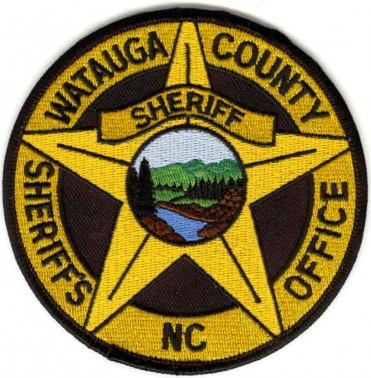Last Updated on October 31, 2016 11:39 am
Autumn in North Carolina brings more than cooler temperatures and falling leaves. This is also the season when more deer appear along state roadways, and in turn there is a greater chance of a collision with a deer.
Between 2013 and 2015, there were more than 56,000 animal-related crashes in the state, and nearly half of them took place in the final three months of the year. A great majority of those involved deer.
A Department of Transportation study shows that in 2015, there were 18,032 animal-related crashes, a few hundred more than the previous year. Tragically, between 2013 and 2015, animal-related crashes claimed 12 lives, injured nearly 3,400 drivers and passengers, and caused nearly $141.7 million in damages.
For 2015 Watauga ranked 74 out of the 100 counties with 69 crashes, Ashe ranks 72 with 79 crashes, Avery ranks 92 with 38 crashes, Wilkes ranks 65 with 101 crashes.
For 2013-2015 damage related to animal crashes totaled $552,500 for Watauga, $305,152 for Avery and $434,019 for Ashe.
From 2005-2015 Watauga has reported a total of 467 crashes.
“Drivers need to be especially careful on the roads at this time of the year,” said Transportation Secretary Nick Tennyson. “Motorists need to be alert to their surroundings for their own safety and the safety of others because of the increased animal activity and decreasing hours of daylight during the final months of the year.”
Wake County extended its streak in 2015 to 13 years in a row leading all counties in the number of animal-related crashes with 839, more than 300 above any other county, and up from 793 in 2014. Over the last three years it has had more than 1,000 crashes than any other county. The high number is a result of the increasing number of drivers and road mileage in the county, combined with considerable wood acreage.
Duplin County is the runner-up with 548 animal-related crashes, while Guilford County is third at 525 crashes. Pitt County is next at 501 and has been among the top-four counties on the list the past six years. Rounding out the top 10 are Mecklenburg, Columbus, Union, Randolph, Brunswick and Forsyth counties.
Counties in the far western part of the state have fewer drivers and road mileage, so once again report the lowest number of crashes. Graham County had just four animal-related crashes, while Swain County had seven.
Deer are on the roadways more during the fall into early winter due to the hunting and mating seasons. They also travel more during times when it is tougher to see them, at dawn and at dusk. The end of daylight savings time, which occurs at 2 a.m. on Sunday, Nov. 6, contributes to drivers being on the road more during reduced daylight.
The largest number of animal-related crashes in 2015 came between 5 p.m. and 9 a.m., and especially between 5 and 11 p.m., when more than half of all the collisions took place. In addition to being the time when deer are more likely to be moving about and crossing roads, it is when decreased driver visibility makes it more difficult to see the animals on or near roadways.
The Department of Transportation has the following tips for motorists to avoid being in a deer-vehicle crash:
- Slow down in posted deer crossing areas and heavily wooded areas, especially during the late afternoon and evening;
- Always wear your seat belt. Most people injured in deer-vehicle crashes were not wearing their seat belt;
- Statistics indicate most deer-vehicle crashes occur in areas where deer are more likely to travel, such as near bridges or overpasses, railroad tracks, streams and ditches;
- Drive with high beams on when possible, and watch for eyes reflecting in the headlights;
- Remember that deer often travel in groups, so do not assume that if you see one deer cross the road in front of you, there won’t be others following;
- Slow down and blow your horn with one long blast to frighten the deer away;
- Increase the distance between your vehicle and other cars, especially at night. If the car ahead of you hits a deer, you may also become involved in the crash;
- Do not swerve to avoid a collision with deer. This could cause you to lose control of your vehicle, flipping it over, veering it into oncoming traffic or overcorrecting and running off the road, causing a more serious crash;
- Do not rely on devices such as deer whistles, deer fences or reflectors to deter deer as these devices have not been proven to reduce deer-vehicle crashes; and
- If your vehicle strikes a deer, do not touch the animal. A frightened and wounded deer can hurt you or further injure itself. The best procedure is to get your car off the road if possible, and call 911.



















